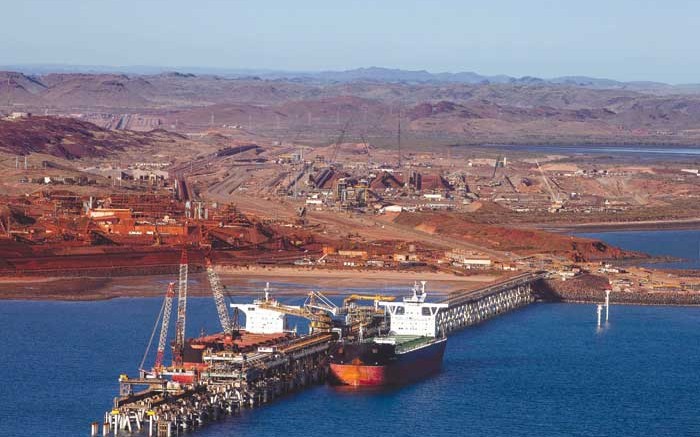VANCOUVER — Despite setting production records during the first quarter, Rio Tinto (NYSE: RIO; LSE: RIO) is not off to the best start to 2014. The company struggled with bad weather at its iron-ore operations in Western Australia, and poor sales volume at its Oyu Tolgoi copper mine in Mongolia. Still, the company appears on track to hit its annual guidance.
Its global iron-ore production on a 100% basis came in at 66.4 million tonnes, which set a new first-quarter production record for the company and is an 8% year-on-year increase. Production was 6% lower than the fourth quarter of 2014, however, and fell short of Rio’s quarterly guidance estimate of 70 million tonnes.
The company’s Pilbara iron-ore operations in Western Australia were hit by cyclone Christine. Severe tropical storms closed Rio’s Pilbara ports and coastal rail operations in late December. Heavy rainfall and other adverse weather conditions in January and February impacted all facets of the supply chain.
Rio finished an infrastructure ramp-up at Pilbara ahead of schedule that saw it hit a 290-million-tonne nameplate capacity per annum during the first quarter, with a second expansion underway that would see 360 million tonnes per year during the first half of 2015.
By mid-year 2014, mine production capacity is planned to increase by more than 60 million tonnes a year between 2014 and 2017.
Meanwhile, Rio is coping with production and social problems at Oyu Tolgoi, which it controls through miner Turquoise Hill Resources (TSX: TRQ; NYSE: TRQ). The operation cranked out 25,300 tonnes copper and 65,600 oz. gold during the first quarter, with higher head grades offset by lower throughput from post-commissioning issues. The company shut down one of its grinding circuit lines for repairs during the quarter.
Turquoise Hill also had poor sales figures during the period, with customer collections of concentrate totalling just 13,100 tonnes copper and 27,800 oz. gold. But the company reports that sales match current production rates, and it expects an inventory drawdown during the second half.
The company has been foreced to restructure its deal at Oyu Tolgoi with the Mongolian government. Turquoise Hill reported that all parties have requested an extension to the project-financing deadline through September 2014, with no further updates on potential resolutions.
The Mongolian government holds a 34% interest in Oyu Tolgoi, and the government is holding up a $5-billion expansion at the project over concerns about cost overruns and mounting debt. The Mongolian government borrowed US$800 million from Rio to earn its stake.
BMO Capital Markets analyst Tony Robson has an “outperform” stock rating and US$4.25-per-share price target on Turquoise Hill, though he noted on April 15 that “resolution of the phase-two issues remain a catalyst for [BMO Research’s] recommendation.”
Regarding Rio’s Pilbara mines, Robson writes that though “iron-ore production — a key driver for Rio Tinto earnings — was slightly below expectations, BMO notes that first-quarter production is normally impacted by seasonal weather difficulties.”
Rio’s 2014 guidance remains unchanged at 295 million tonnes iron ore and 570,000 tonnes copper. After its first-quarter announcement shares were down 2.5%, or US$1.40, en route to a US$55.46-per-share close at press time. Rio has 1.9 billion shares outstanding for a $103-billion market capitalization.


Be the first to comment on "Rio Tinto struggles with Pilbara iron ore, Oyu Tolgoi"